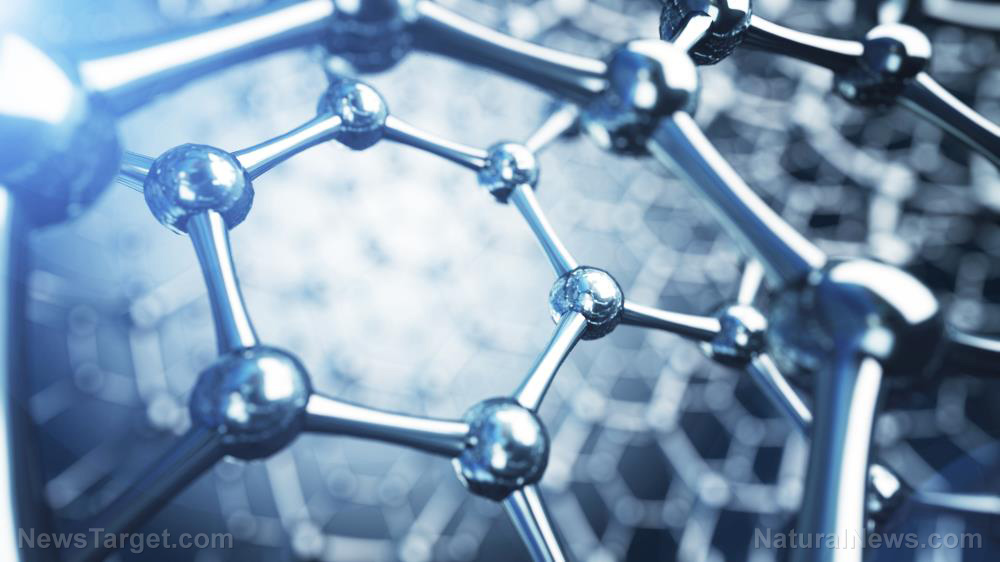Dual-function catalyst produces hydrogen fuel while cleaning up polluted water
03/21/2021 / By Virgilio Marin

Researchers developed a new catalyst that generates hydrogen fuel while destroying water pollutants. In a study published on March 17 in the journal ACS ES&T Engineering, the researchers described how they merged multiple metals to more efficiently produce hydrogen from wastewater.
Exploring a clean and efficient way of generating hydrogen
Hydrogen is a low-polluting source of energy and one of the most abundant elements on Earth. However, it does not exist as gas on the planet but is incorporated in compounds such as water. One way to extract hydrogen is through a process called photocatalytic water splitting, or the breaking apart of water molecules using sunlight.
Unlike other techniques that use fossil fuels, photocatalytic water splitting in itself is a clean technique of generating hydrogen. But current approaches require the use of chemical additives to expedite the rather inefficient process.
With that in mind, the researchers explored a dual-function strategy that efficiently extracts hydrogen from wastewater while degrading water pollutants. They used titanium dioxide as a catalyst because titanium-based materials remove contaminants and at the same time generate hydrogen.
But titanium dioxide is not efficient at both tasks due to its overlapping reaction sites. To that end, the researchers coated nanoscale titanium dioxide crystals with a thin layer of cobalt dioxide to create separate places for reactions to occur.
The material failed to produce substantial amounts of hydrogen during the team’s initial tests. So the researchers laced the material with a small amount of platinum nanoparticles, which are an efficient but expensive catalyst.
The new material was able to degrade antibiotics and produce substantial amounts of hydrogen when exposed to simulated sunlight. The researchers then used the material on wastewater and deionized water samples. While the catalyst enhanced hydrogen production on both samples, it produced the greatest amount of hydrogen in wastewater.
The researchers concluded that their dual-function strategy efficiently generates hydrogen fuel while destroying water pollutants at the same time. (Related: A cheaper alternative? Scientists looking at converting plastic waste into hydrogen fuel.)
Efficiently producing hydrogen fuel using electricity
In a study published last year in the journal Energy & Environmental Science, South Korean researchers explored ways of improving another method of producing hydrogen called water electrolysis.
Water electrolysis involves the use of electricity to split water into its constituent oxygen and hydrogen molecules. However, this process is inefficient because the oxygen-generating reaction occurs too slowly. To that end, the researchers developed a new catalyst using a metal organic framework made up of nickel and iron to speed up this reaction.
A metal organic framework is a material in which a metal and an organic material form a framework similar to the reinforcing steel bars of a building. It’s a promising catalyst because it has a large surface area and the metal atom where the catalytic reaction occurs is exposed on the surface.
The researchers designed a catalyst according to theoretical calculations that showed the optimal structure and composition of the framework.
“Doping iron on the nickel organic metal framework improves the reactivity at the point of a single atom and improves overall reactivity,” said Miran Ha, a postdoctoral researcher at the Ulsan National Institute of Science and Technology (UNIST) in South Korea and one of the study researchers.
The resulting catalyst was able to produce large amounts of hydrogen using much less energy than commercial iridium oxide catalysts. It also remained stable after being used for more than 1,000 hours.
“This study not only improved the slow oxygen-generating reaction rate problem but also solved the price and stability problems of existing commercial catalysts at the same time,” said Kwang Kim, a professor of chemistry at UNIST and one of the study researchers.
Compared to iridium, nickel and iron are cheaper and more widely available.
“We expect that the newly developed catalyst can be used in various energy conversion devices,” Kim added.
Read more innovative studies about hydrogen fuel production at Innovation.news.
Sources include:
Tagged Under: breakthrough, breakthroughs, catalysts, Clean Energy, clean water, discoveries, electricity, environment, future science, hydrogen fuel, hydrogen production, innovation, inventions, photocatalytic water splitting, renewable energy, research, science and technology, water electrolysis, water health, water pollutants
RECENT NEWS & ARTICLES
COPYRIGHT © 2017 INVENTIONS NEWS





















